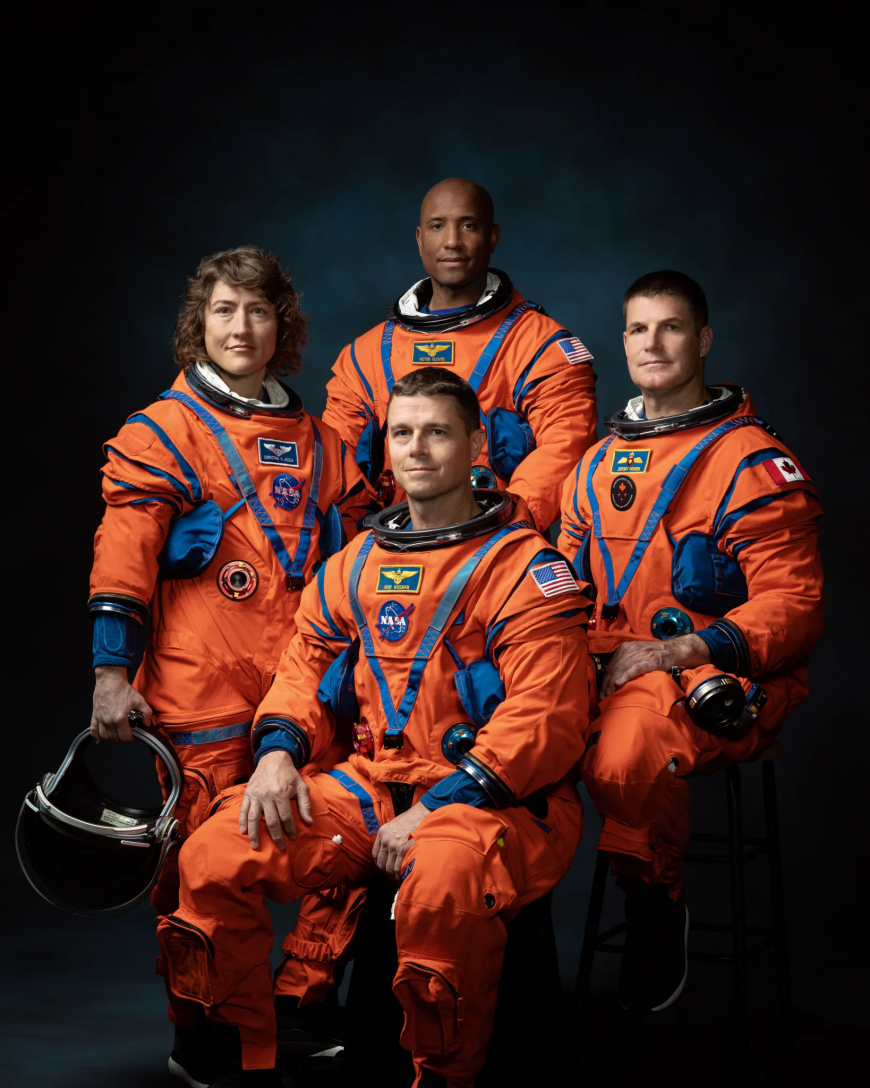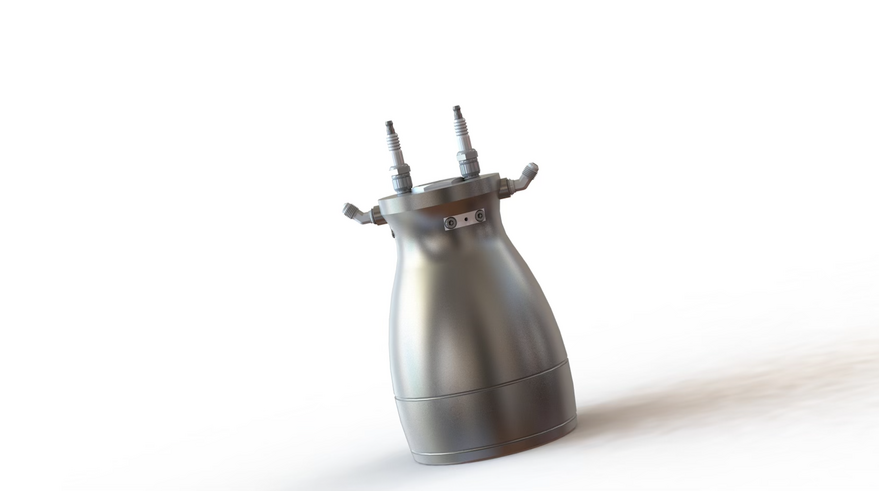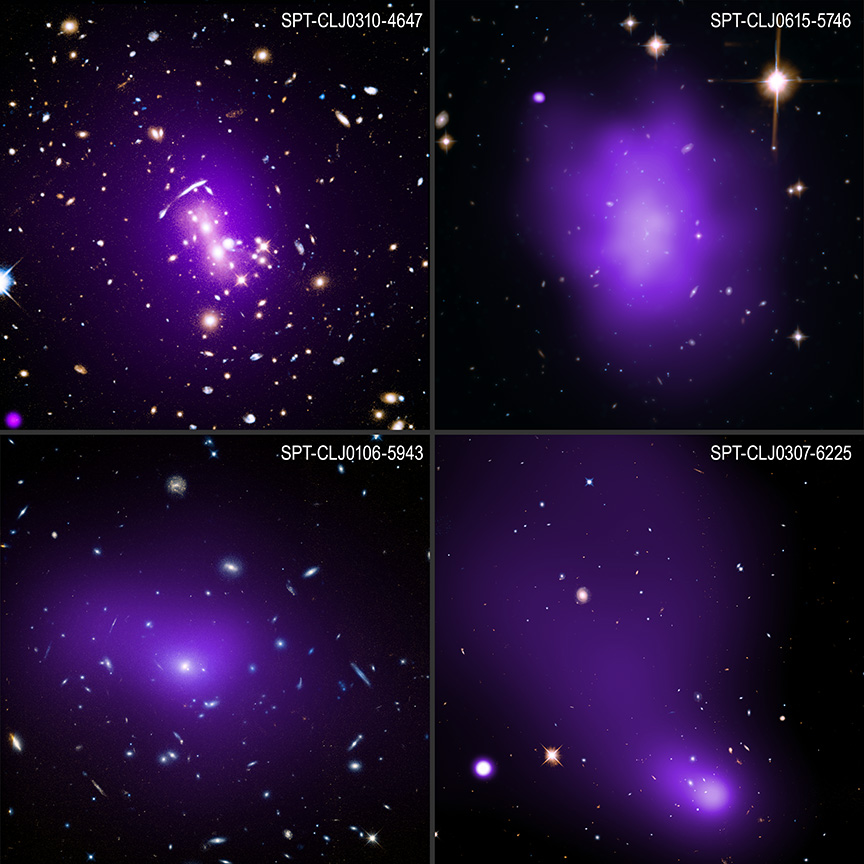First Artemis Moon Crew Trains for Return to Earth
NASA astronaut and Artemis II commander Reid Wiseman exits the side of a mockup of the Orion spacecraft during a training exercise in the Neutral Buoyancy Lab at NASA’s Johnson Space Center in Houston Jan. 23, 2024.
First Artemis Moon Crew Trains for Return to Earth
NASA astronaut and Artemis II commander Reid Wiseman exits the side of a mockup of the Orion spacecraft during a training exercise in the Neutral Buoyancy Lab at NASA’s Johnson Space Center in Houston Jan. 23, 2024.
As part of training for their mission around the Moon next year the crew of four astronauts practiced the recovery procedures they will use when the splash down in the Pacific Ocean. Artemis II is the first crewed mission on NASA’s path to establishing a long-term presence at the Moon for scientific discovery and exploration through the Artemis campaign.
The approximately 10-day flight will test NASA’s foundational human deep space exploration capabilities, the SLS (Space Launch System) rocket and Orion spacecraft, for the first time with astronauts.
Artemis II
Four astronauts will venture around the Moon on Artemis II, the first crewed mission on NASA's path to establishing a long-term presence at the Moon for science and exploration through Artemis. The 10-day flight will test NASA's foundational human deep space exploration capabilities, the SLS rocket, Orion spacecraft, for the first time with astronauts.
Artemis II builds on the success of the uncrewed Artemis I in 2022, and will demonstrate a broad range of capabilities needed on deep space missions. The Artemis II flight test will be NASA’s first mission with crew aboard the SLS (Space Launch System) rocket and Orion spacecraft and will pave the way to land the first woman on the Moon on Artemis III.
MISSION TYPE: Crewed Lunar Flyby
CREW SIZE: 4
LAUNCH: No earlier than Sept. 2025
MISSION DURATION: 10 days
NASA’s First Flight With Crew Important Step on Long-term Return to the Moon, Missions to Mars
NASA astronauts (left to right) Christina Koch, Victor Glover, Reid Wiseman,
Canadian Space Agency Astronaut Jeremy Hansen. Credit: NASA/Josh Valcarcel
The Artemis II flight test will be NASA’s first mission with crew under Artemis and will pave the way to land the first woman and next man on the Moon on Artemis III. Astronauts on their first flight aboard NASA’s Orion spacecraft will confirm all of the spacecraft’s systems operate as designed with crew aboard in the actual environment of deep space. Under Artemis, NASA will return humans to the Moon for long-term exploration and scientific discovery, gaining the knowledge needed future missions to worlds beyond, including Mars.
“The unique Artemis II mission profile will build upon the uncrewed Artemis I flight test by demonstrating a broad range of SLS and Orion capabilities needed on deep space missions,” said Mike Sarafin, Artemis mission manager. “This mission will prove Orion’s critical life support systems are ready to sustain our astronauts on longer duration missions ahead and allow the crew to practice operations essential to the success of Artemis III.”
Leaving Earth
The mission will launch a crew of four astronauts from NASA’s Kennedy Space Center in Florida on a Block 1 configuration of the Space Launch System (SLS) rocket. Orion will perform multiple maneuvers to raise its orbit around Earth and eventually place the crew on a lunar free return trajectory in which Earth’s gravity will naturally pull Orion back home after flying by the Moon.
The initial launch will be similar to Artemis I as SLS lofts Orion into space, and then jettisons the boosters, service module panels, and launch abort system, before the core stage engines shut down and the core stage separates from the upper stage and the spacecraft. With crew aboard this mission, Orion and the upper stage, called the interim cryogenic propulsion stage (ICPS), will then orbit Earth twice to ensure Orion’s systems are working as expected while still close to home. The spacecraft will first reach an initial orbit, flying in the shape of an ellipse, at an altitude of about 115 by 1,400 miles. The orbit will last a little over 90 minutes and will include the first firing of the ICPS to maintain Orion’s path. After the first orbit, the ICPS will raise Orion to a high-Earth orbit. This maneuver will enable the spacecraft to build up enough speed for the eventual push toward the Moon. The second, larger orbit will take approximately 23.5 hours with Orion flying in an ellipse between about 115 and 46,000 miles above Earth. For perspective, the International Space Station flies a nearly circular Earth orbit about 250 miles above our planet.
After the burn to enter high-Earth orbit, Orion will separate from the ICPS. The expended stage will have one final use before it is disposed through Earth’s atmosphere—the crew will use it as a target for a proximity operations demonstration. During the demonstration, mission controllers at NASA’s Johnson Space Center in Houston will monitor Orion as the astronauts transition the spacecraft to manual mode and pilot Orion’s flight path and orientation. The crew will use Orion’s onboard cameras and the view from the spacecraft’s windows to line up with the ICPS as they approach and back away from the stage to assess Orion’s handling qualities and related hardware and software. This demonstration will provide performance data and operational experience that cannot be readily gained on the ground in preparation for critical rendezvous, proximity operations and docking, as well as undocking operations in lunar orbit beginning on Artemis III.
Checking Critical Systems
Following the proximity operations demonstration, the crew will turn control of Orion back to mission controllers at Johnson and spend the remainder of the orbit verifying spacecraft system performance in the space environment. They will remove the Orion Crew Survival System suit they wear for launch and spend the remainder of the in-space mission in plain clothes, until they don their suits again to prepare for reentry into Earth’s atmosphere and recovery from the ocean.
While still close to Earth, the crew will assess the performance of the life support systems necessary to generate breathable air and remove the carbon dioxide and water vapor produced when the astronauts breathe, talk, or exercise. The long orbital period around Earth provides an opportunity to test the systems during exercise periods, where the crew’s metabolic rate is the highest, and a sleep period, where the crew’s metabolic rate is the lowest. A change between the suit mode and cabin mode in the life support system, as well as performance of the system during exercise and sleep periods, will confirm the full range of life support system capabilities and ensure readiness for the lunar flyby portion of the mission.
Orion will also checkout the communication and navigation systems to confirm they are ready for the trip to the Moon. While still in the elliptical orbit around Earth, Orion will briefly fly beyond the range of GPS satellites and the Tracking and Data Relay Satellites of NASA’s Space Network to allow an early checkout of agency’s Deep Space Network communication and navigation capabilities. When Orion travels out to and around the Moon, mission control will depend on the Deep Space Network to communicate with the astronauts, send imagery to Earth, and command the spacecraft.
After completing checkout procedures, Orion will perform the next propulsion move, called the translunar injection (TLI) burn. With the ICPS having done most of the work to put Orion into a high-Earth orbit, the service module will provide the last push needed to put Orion on a path toward the Moon. The TLI burn will send crew on an outbound trip of about four days and around the backside of the Moon where they will ultimately create a figure eight extending over 230,000 miles from Earth before Orion returns home.
To the Moon and “Free” Ride Home
On the remainder of the trip, astronauts will continue to evaluate the spacecraft’s systems, including demonstrating Earth departure and return operations, practicing emergency procedures, and testing the radiation shelter, among other activities.
The Artemis II crew will travel approximately 4,600 miles beyond the far side of the Moon. From this vantage point, they will be able to see the Earth and the Moon from Orion’s windows, with the Moon close in the foreground and the Earth nearly a quarter-million miles in the background.
With a return trip of about four days, the mission is expected to last about 10 days. Instead of requiring propulsion on the return, this fuel-efficient trajectory harnesses the Earth-Moon gravity field, ensuring that—after its trip around the far side of the Moon—Orion will be pulled back naturally by Earth’s gravity for the free return portion of the mission.
Two Missions, Two Different Trajectories
Following Artemis II, Orion and a crew of four will once again travel to the Moon, this time to make history with the first woman and next man to walk on its surface. Beginning with Artemis III, missions will focus on establishing surface capabilities and building the Gateway in orbit around the Moon.
“Together, these test flights will demonstrate the capabilities we need to land the first woman and next man on the Moon and enable sustainable missions for decades to come,” said Sarafin. “We will take the experience gained exploring the Moon to prepare for the next giant leap to Mars.”
NASA is leading a return to the Moon through an innovative and sustainable program of exploration with commercial and international partners to enable human expansion across the solar system and to bring back to Earth new knowledge and opportunities. SLS and Orion are critical backbone capabilities, along with the Gateway in lunar orbit and modern human landing systems, that will enable human missions of increasing complexity in deep space.






































